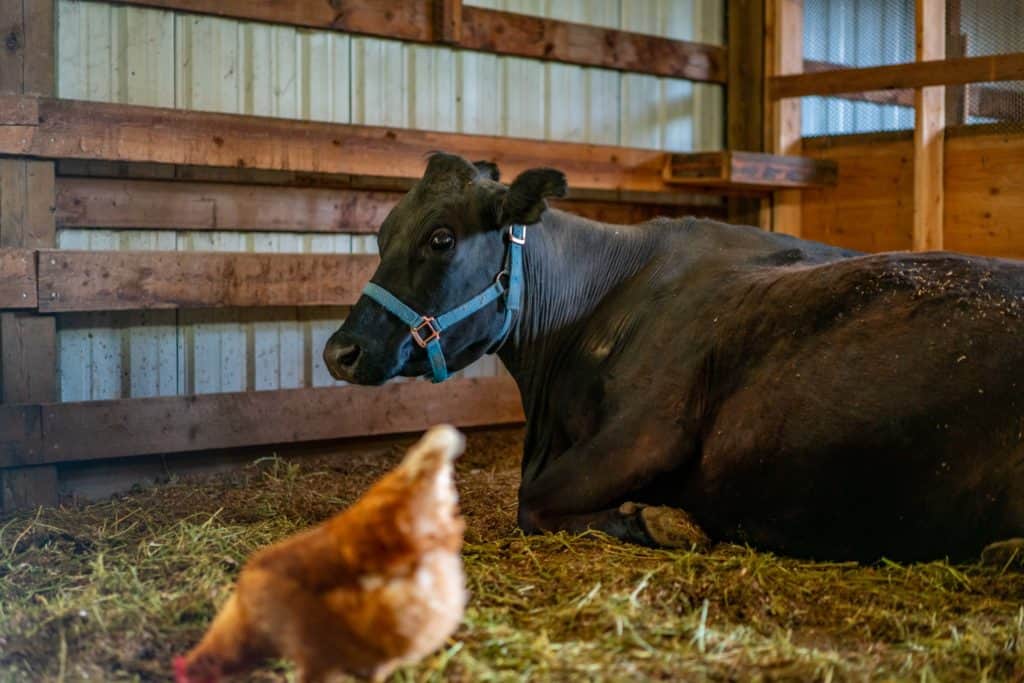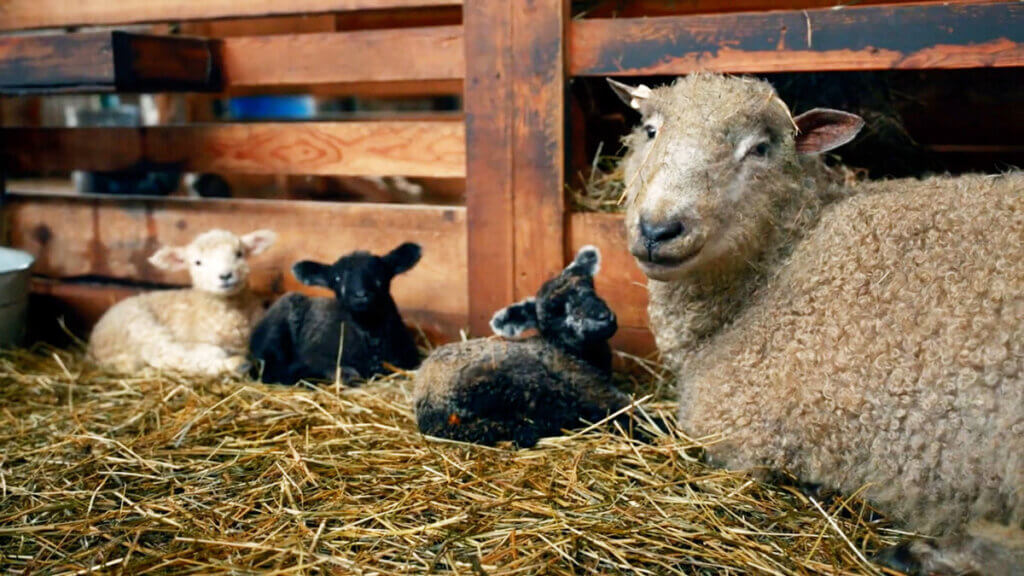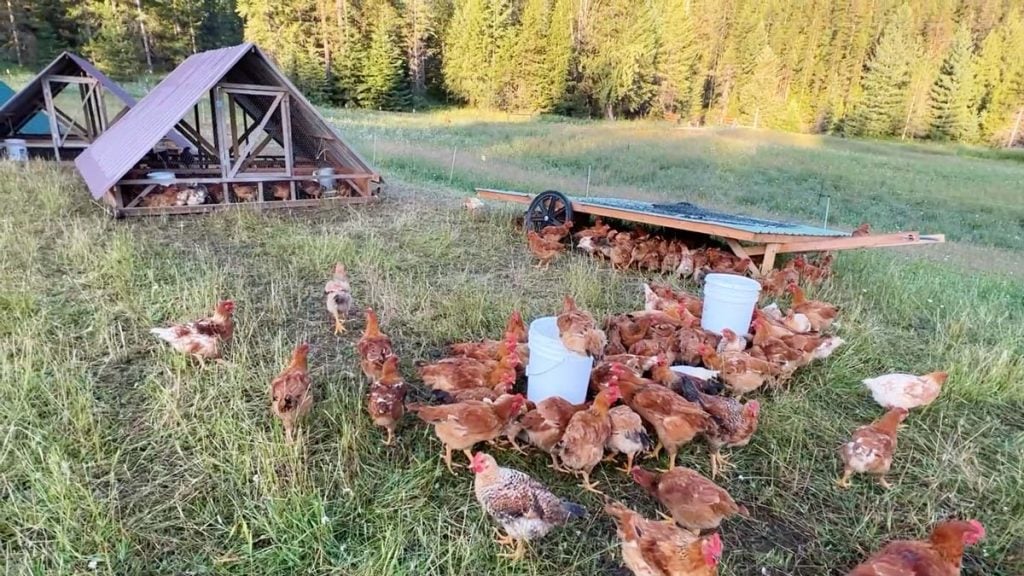Did you know that in certain parts of the world, water buffalo, reindeer, yaks, and even camels are domesticated for dairy production? When it comes to animal husbandry here in the US, you won’t commonly find these animals on a farm. But, if you are considering dairy animals, you can use this guide to explore more popular choices for the American homestead.

Why We Love Raising Dairy Animals
Raising dairy animals has proven to be a profitable return on our investment, making them some of the best homestead animals. When it comes to producing food for our family, our cow is our second most productive asset next to growing a year’s worth of food in our garden.
She provides us with everything we need for drinking nutritious raw milk and making homemade dairy products such as cheese, kefir, Instant Pot yogurt, freshly churned butter, sour cream, etc. Additionally, we raise goats for dairy because we love delicious chevre cheese.
Needless to say, we have to process a substantial amount of milk, so in addition to making our own dairy products, we have also learned to find recipes that use a lot of milk and how to preserve milk in order to make sure nothing goes to waste during those seasons of abundance.

The 7 Animals That Give Milk
When it comes to dairy production, there are seven main animals that stand out. These animals are cows, goats, sheep, camels, buffalo, yaks, and reindeer. While each animal has its own unique qualities and characteristics, we will focus on cows, sheep and goats as the primary dairy animals for the homestead.
| Animal | Common Uses | Average Milk Production (per day) | Notable Breeds |
|---|---|---|---|
| Cow | Drinking, cheese, butter, yogurt | 6-7 gallons | Holstein, Jersey, Guernsey |
| Goat | Drinking, cheese, soap, yogurt | 3-5 quarts | Saanen, Alpine, Nubian |
| Sheep | Drinking, cheese, butter, yogurt | 3-4 quarts | East Friesian, Lacaune |
These figures are approximate and can vary depending on individual breeds and other factors. However, they provide a general idea of the milk production potential of each animal.

Dairy Cows
Due to the volume of demand to produce our own dairy products, a dairy cow is our top choice. There are various breeds of cows specifically developed for milk production, and they have distinct characteristics and varying milk yields, making them suitable for different farming needs and preferences.
- Guernsey – Guernsey’s can be high producers, even with calf sharing. You can get upwards of six gallons a day. Guernseys originate from the Channel Island of Guernsey. These cows are medium-sized with reddish-brown and white markings. Guernseys are prized for their golden-colored milk, high in butterfat and protein.
- Brown Swiss – The Brown Swiss breed, known for its docile temperament, originated in Switzerland. They are large cows with a distinctive brown coat color and are known for their exceptional milk yield, rich in butterfat content.
- Holstein-Friesian – The Holstein-Friesian breed, often referred to as Holsteins, is the most common breed of dairy cow worldwide. Known for their striking black and white markings, Holsteins are renowned for their high milk production and are widely used in commercial dairy operations.
- Milking Shorthorn – The Milking Shorthorn breed originated in northeastern England and is known for its versatility. These cows come in various coat colors, including red, white, and roan, and are valued for their adaptability to different climates and their good milk production.
- Jersey – The Jersey cow, named after the Island of Jersey, is small in size but packs a punch when it comes to milk production. Jersey cows produce milk with a high butterfat and protein content, making it ideal for producing rich and creamy dairy products. This is the breed we’ve had exclusively here at Riverbend (and in the past on our other properties).
- Ayrshire – Ayrshire cows originated in Scotland and are known for their hardiness and adaptability to various environments. They have a white and reddish-brown coat color and are valued for their moderate milk production and efficient conversion of feed into milk.
- Dutch Belted – The Dutch Belted cow, also known as the Lakenvelder, hails from the Netherlands. These cows have a distinctive black belt-like marking across their bodies, with a white coat. While they have a smaller frame, Dutch Belted cows are known for their high milk quality and efficiency.

Dairy Goats
While cows are widely known for their high milk production, they do require more resources, knowledge and skill to handle. Additionally, some find that they have intolerances to cow’s milk. If this resonates with you, considering dairy goats could be a solution.
Goat’s milk offers a slightly higher nutritional profile than cow’s milk and can be easier to digest. (Source) These benefits, paired with easier manageability, make goats a great option for beginners or for small-scale farming. Be forewarned that goats are masterful at escaping fences. As the joke goes, “Unless the gate is water-tight, the goats will escape!”
- Nigerian Dwarf – The Nigerian Dwarf goat is a small, friendly breed known for its high milk production relative to its size. They have a calm temperament and come in a variety of colors. Nigerian Dwarf goats are ideal for small farms or backyard setups due to their manageable size.
- Nubian – The Nubian goat (pictured above) is a popular breed known for its long, pendulous ears and large size. Nubians are known for their high butterfat content in their milk, making it excellent for cheese and butter production. They have an outgoing and gregarious personality, often referred to as the “Jersey cows” of the goat world.
- Saanen – The Saanen goat is a white or cream-colored breed known for its large size and high milk production. They have a calm and docile temperament, making them easy to handle and work with. Saanens are often used in commercial dairy operations due to their excellent milk production and efficiency.
- Alpine – The Alpine goat is a medium to large-sized breed known for its agility and hardiness. They come in a variety of colors and have erect ears. Alpine goats are versatile and adaptable to different climates and terrains. They are also excellent milk producers and have a pleasant temperament.
- LaMancha – The LaMancha goat is easily recognizable by its unique ear characteristics. They have very small or no external ears at all. LaManchas are known for their high milk production, adaptability, and calm demeanor. They are sturdy and efficient dairy goats, making them valuable additions to any herd.
For more information, check out our collaboration with Anne of All Trades on raising goats for dairy.

Dairy Sheep
When we think of dairy animals, cows and goats often come to mind. However, if you are not able to tolerate cow’s milk and you don’t prefer the taste of goat’s milk, it’s important not to overlook the unsung heroes of the dairy industry – sheep!
We found the flavor profile of sheep milk to be very similar to cow’s milk, and while they are not considered high producers, certain breeds of sheep have been specifically bred for their milk production.
- East Friesian – Originating from the Netherlands, East Friesian sheep are known for their high milk yield and excellent milk quality. They are prized for their rich, creamy milk, which is often used for making delicious cheeses and yogurts.
- Lacaune – Originally hailing from France, Lacaune sheep are renowned for their high milk production and adaptability to various climates. They are hardy and resilient, making them suitable for dairy farming in different regions.

Calf Sharing: A Win-Win Practice
When it comes to dairy farming, calf sharing has emerged as a beneficial practice that promotes both the well-being of the calves and the steady milk supply. Calf sharing involves taking turns, alternating between allowing a dairy animal’s calf to nurse and the cow being milked for human consumption.
This practice recognizes the importance of the mother-calf bond and the nutritional benefits of natural nursing. By allowing the calf to nurse, it receives the essential antibodies, vitamins, and minerals provided by its mother’s milk, setting a strong foundation for its growth and development.
At the same time, calf sharing supports a steady milk supply for the homestead. By carefully managing the milking schedule, we can make sure that both the calf and the homestead can benefit from the arrangement.
We have found that not only does calf sharing promote the health of our animals, but it also helps us stay on top of our milk processing, reducing stress and making sure nothing goes to waste.

How to Prepare for a Dairy Animal
Before bringing a dairy animal to your farm, it’s vital to make the necessary preparations. Creating a suitable environment, arranging for proper nutrition, and making sure you have adequate space are key factors to consider.
- Create a Suitable Environment – Provide your dairy animals with a clean, well-ventilated space that is free from excessive heat or cold. Make sure the housing is sturdy and secure to protect them from predators. Additionally, consider factors such as lighting, bedding, and cleanliness to promote their comfort and health.
- Arrange for Proper Nutrition – Consult with a veterinarian or an animal nutritionist to develop a balanced diet plan for your dairy animals. This may include a combination of pasture grazing, high-quality hay, and commercially prepared feed. Make sure there is access to clean water at all times to keep them hydrated.
- Allocate Adequate Space – Allow your dairy animals enough space to move around comfortably. The specific requirements may vary depending on the breed and size of the animals. Providing ample pasture area in addition to a well-sized barn is essential for their well-being and helps prevent stress-related issues.

How to Choose a Dairy Animal
When it comes to dairy farming, selecting the right animal is essential for success. The right choice can significantly impact milk production, profitability, and overall herd management.
- Breed Characteristics – Each breed of dairy animal has its unique characteristics that determine their milk production and suitability for different farming systems. Select your animals according to your needs as well as make sure your homestead can meet the needs of your animals.
- Personality – Bear in mind that just like people, all animals have distinct personalities. For example, we had one cow who had a cantankerous personality and had been known to charge people in the pasture, but she was remarkably patient in the milking stanchion. Yet, our subsequent cow was incredibly docile making her ideal for homesteading with children, but initially refused to be milked in a stanchion. Being prepared to work with these unique personality traits and adjusting your farming systems will be the key to creating a successful relationship between you and your animals.
- Milk Production – The milk production capacity is an important consideration. Different breeds have varying average milk yields, so it’s important to assess your capacities and needs and match that with the production potential of individual animals based on their genetics and lineage.
So, whether you’re a beginner or a seasoned homesteader, the world of dairy animals offers endless possibilities. Embrace the journey, and remember to have the proper knowledge and a firm commitment before adding to your homestead.

FAQ
A dairy animal is an animal that has been selectively bred to produce milk. These animals undergo specialized breeding and management practices to maximize milk production.
Milking by hand is a simpler approach. We have just one dairy cow, so we find it’s easier to milk by hand than to invest in and maintain milking equipment. Maintaining a sanitary stainless steel pail is all you need for hand milking, so it’s an ideal system for children to manage as well.
Our cow typically gives 3-4 gallons per milking, so that takes approximately 20-30 minutes.
Our children typically start milking our dairy cow between the ages of 9 and 10.
Depending on your setup, you are looking at a minimum of an hour a day, so when you add in two milking sessions, you should expect to spend at least 2 hours a day caring for your cow.
When you have an efficient system set up, you can expect to spend 30 minutes a day sanitizing your milking pail and storage equipment and straining your milk for storage.

Other Posts You May Enjoy
- Raising Goats 101: For Dairy
- Rotational Grazing for the Small Homestead
- Chevre Cheese Recipe (Goat’s Milk Cheese)
- Making Homemade Dairy Products Practical
- Can You Make Cheese From Store-Bought Milk?
- Easy Instant Pot Yogurt Recipe (Step-by-Step)
- What to Do With Raw Milk
- Recipes That Use a Lot of Milk


















